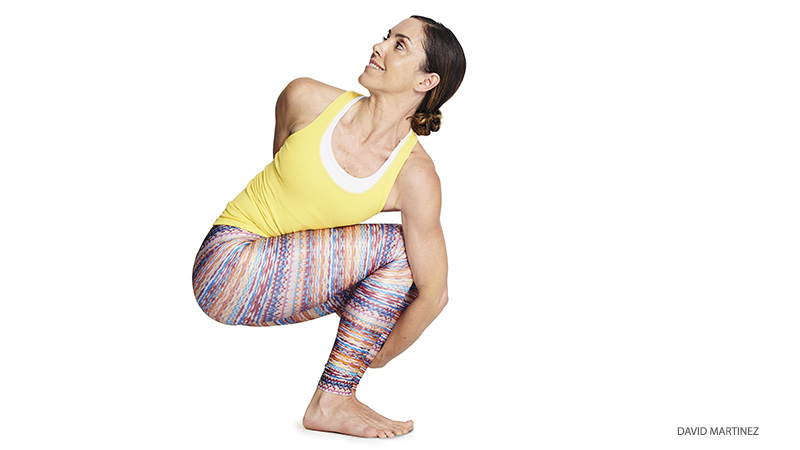Pasasana – Noose Pose
Introduction:
Pasasana is derived from the combination of the Sanskrit words Pasa(a snare or trap or noose or tie or bond or cord or fetter) and asana (posture or pose). This pose resembles the nose. This is the reason for naming as Pasasana. It is called as Noose Pose in English.
Preparatory Poses for Pasasana are Cobbler Pose (Baddha Konasana), Hero Pose (Virasana), Garland Pose (Malasana), Cow face Pose (Gomukhasana), Reclining Big Toe Pose (Supta Padangusthasana), Reclined Bound Angle Pose (Supta Baddha Konasana), Bharadvaja’s Twist (Bharadvajasana), Revolved Side Angle Pose (Parivrtta Parsvakonasana), Child Pose (Balasana), Sage Pose I & III (Marichyasana I and III) and Half Lord Of The Fish Pose (Ardha Matsyendrasana); and the follow-up Poses are Marichyasana III or The Sage Pose III, Ardha Matsyendrasana or the Half Lord Of The Fishes Pose and long seated-twist sequences.
Steps Involved:
- Start with Tadasana with your feet together.
- Slowly bend your knees and come to a squat.
- Bring your buttocks to your heels.
- Beginners can use blocks at the starting stage.
- Take your knees slightly towards the right.
- Exhale; now slowly twist the torso towards the left.
- Let your upper body to stay touch the left thigh.
- Bring your right arm up
- Now place it on the outer side of your left shin.
- Breathing should be normal.
- Now slowly turn your right palm towards the floor
- Then wrap your arm around the shins.
- Take your left arm, and bring it around your back.
- And try to hold the right hand.
- Use the right arm as support for your twist; now try to twist your upper body further towards the left.
- Turn your head towards the left.
- Try to bring the shoulder blades towards the spine.
- Hold in this position for few seconds (20 to 50 seconds).
- Exit the pose by exhale and slowly release the twist.
- Repeat all the above steps with the opposite side.
Benefits:
- Stretches groins, ankles, thighs and spine.
- Strengthens the spine, hips and ankles.
- Opens the shoulders and chest.
- Helps to stimulate the abdominal organs.
- It helps to improve the digestion and elimination of the waste material.
- Increases the oxygen intake.
- Regulates the blood circulation.
- It relieves the tension in the back, neck and shoulder.
- Regulates the Menstrual cycle, and eliminates the discomfort.
- Great remedy for the mild back, shoulder and neck tension.
- Regular practice can cure the asthma, flatulence and sciatica.
Dos, Don’ts and Tips:
People with the following problem please avoid practising this pose, or practise under the expert’s supervisions and doctor’s advice.
- Back Injury
- Knee injury
- Herniated disk
Practise this yoga daily, will yield the better results.
It’s must to do this pose in the morning with empty stomach.
Do not rush. Stretch gently, know your body limitation.

